Keywords
|
| CO2 emission reduction, Energy efficient wireless network, Green Radio Technology, Hybrid Energy, Solar and Wind Energy, Energy conservation, Interconnected grid, Private grid,GRT. |
| |
| |
INTRODUCTION
|
| The main idea behind green radio communication is to reduce the amount of energy consumption while maintaining satisfactory Quality of Service (QoS). It is observed that almost half of a mobile service provider’s annual operating expenses are energy costs [1]. Each BS, normally the mobile tower, in cellular network consumes electrical energy roughly up to 2.7kWh [2]. To achieve wide area coverage, high energy is consumed per annum. This high energy is normally supplied by a diesel generator (DG) set which emits carbon di-oxide (CO2) gas into the atmosphere. At present, the telecommunication industry is responsible for about 2 percent of CO2 emissions and due to the growth of industries, it may increase up to 4 percent by 2020[3]. As a result, political initiatives start to put requirements on operators to lower the CO2 emissions of communication networks [4]. In Europe, companies such as Orange (France), Ericson (Sweden) and Vodafone (United Kingdom) aim to reduce their CO2 emission by 50-80 percent by the year 2020[5]. |
| Hence, the reduction of energy consumption in the telecommunications industry sector will result in a positive impact on both the environment and operator’s profit [1]. |
II. PRESENT SCENARIO
|
| Fig 3.1 Shows the present scenario and the limitations of the present is given below. |
| ïÃâ÷ The architectural operation of present scenario is not energy-efficient. It does not account for user frequency (i.e. number of mobile users) in an area. |
| ïÃâ÷ In India more than 4 lakh towers are present. By 2014 it is estimated to go beyond 5 lakh. |
| ïÃâ÷ In India more than 4 lakh towers are present. By 2014 it is estimated to go beyond 5 lakh. |
| ïÃâ÷ All the towers in an area are turned ON irrespective of the user frequency. One tower delivers 85 kg of carbon per day. |
| ïÃâ÷ During night time only 10% of the total users communicate still all the towers remain in the working state. |
| ïÃâ÷ The source for towers is based on the power requirement. A critical mobile network consumes 40- 50MW approximately, even excluding the power consumed by users’ handsets. |
| ïÃâ÷ A typical diesel generator, used for supplying power for communication purpose, consumes seven million liters of diesel per day. |
III. GREEN RADIO
|
| The main aim of green radio is to minimize two factors which include |
| ïÃâ÷ Total power consumption in the BS by using Energy efficient wireless networks |
| ïÃâ÷ Global warming by reducing the emission of Carbon di-oxide (CO2) gas from the fossil fuels. |
| Fig2 shows the proposed configuration with GRT. This technique involves an optimal resource on-off switching framework that adapts to the fluctuations in the traffic load and maximizes the amount of energy saving under quality of service (QoS). The traffic load in a wireless network can have spatial and temporal fluctuations due to user mobility and activities [7]. |
| An example is in a city scenario, where the traffic load during daytime hours on weekdays is heavy in office areas and lighterin residential areas, while it is vice-versa in the evening. In the literature, researchers propose to exploit such traffic load fluctuations, by switching off some of the available resources when the traffic load is light. This is known as dynamic planning. On one hand, these resources can be the radio transceivers of active BSs [8]. However, when a BS is in active mode, power supply, processing circuits, and air conditioning take up to 60 percent of the total energy consumption [7]. Hence, significant energy saving can be achieved if the entire BS is switched off when the traffic load is light [5, references therein]. |
IV. RENEWABLE ENERGY SOURCES
|
| Nowadays, we are facing a number of serious energy related problems, including energy shortages, energy price hikes, and global warming; these problems have a significant negative impact in terms of the environment, global health, and social and economic well-being. Also, the energy crisis increases from day-to-day, we need to depend on Renewable energy sources. In this literature, the implementation of solar and wind as a hybrid energy is used in cellular communication towers. This hybrid energy can complement the fossil fuel power generation and also reduce the amount of electrical power consumption taken from the grid. |
| As the mobile tower can withstand weight up to 280 kg, micro wind turbines are employed on the tower. Along with this, each BS will have a control room and the solar panels are fixed on the top of the roof and on the side of the tower to harness the solar energy. |
| In each BS, power is consumed to run the cooling unit inside the control (generator) room and the lighting inside the room and on the top of the tower along with lightning arrestor. The cooling unit consists of an air conditioner and a blower (fan). Both the fan and air conditioner run throughout the day irrespective of the climate change and temperature around the room. Also the lightings in the tower and the room glows irrespective of the light availability in the environment. From this it is clear that the energy consumption by these instruments can be minimized depending upon the environmental factors. |
V. POWER TRANSMISSION
|
| Instead of storing the energy generated using solar and wind in the battery, this energy can be transmitted using wired network between the towers. For example, In India there are about 5 lakh towers have been erected and being used for telecommunication. By using this GRT on an average, around 1 lakh tower can be switched off. If each tower can generate 2kW, approximately (2*103*105) 200MW can be generated and this power can be transmitted over a wired transmission line between the towers. This forms a private grid between the cellular networks. This will be a tie line with the electricity board at certain points at which in case of emergency outages, this energy can be shared with the power grid. |
| Also, the cost of diesel generator for a single station will range from Rs1,50,000 and above depending upon the area of coverage. And by providing transmission line between the towers, the need for implantation of diesel generator at each and every tower can be minimized. i.e., Diesel generator can be employed in a ratio of 1 for 10 or 1 for 20. This leads to the saving in fuel cost and fuel transportation cost. |
| In this literature, by employing a transmission line between the towers we can achieve, |
| ïÃâ÷ Reduction in the investment on diesel generators. |
| ïÃâ÷ Reducing the fuel cost. |
| ïÃâ÷ Reducing the fuel transportation cost. |
| ïÃâ÷ Power backup from the private grid (from mobile towers) in times of emergency outages. |
VI. HARDWARE IMPLEMENTATION
|
| Apart from implementing this configuration, we monitor certain parameters, which can help in reducing energy consumption. Those parameters are Responder Frequency, Cooling-Fan, Air Conditioner, and Light Indicator. Every tower has a lightning conductor, along with Light Indicator. This light glows throughout the day, which is not necessary. Similarly, we have Cooling-Fan and Air Conditioner running round the clock. Thus a tower consumes power to run all these accessories, apart from power used for transmitting signal. So, this technology proposes a novel method to implement a corrective measure, which will ensure optimum utilization of energy resources. In order to control these parameters automatically, we use a micro-controller based embedded system. The PIC microcontroller is used to do the control job and send the signal to a computer. Here, PIC micro controller is interfaced with all the above mentioned Integrated chips (ICs). Each of these ICs performs different task whose output is given to a PC through the PIC micro controller. We use LDR to monitor the light intensity around the tower to determine day-break and night. We use two Thermistors to determine temperature and moisture content. There is a standard value fixed for all these parameters. When it deviates from that switching action takes place through relay circuits. In our model, we use four relays to monitor each of temperature, humidity, light intensity and frequency. For example light intensity above 1000 Lumens is considered to be day-break, if not, it’s night. Hence light indicator will be turned ON automatically during night time. Similarly, based on Temperature and Humidity of the generator room, Air-Conditioner and Cooling-Fan will operate respectively. This is the basic operation of our model. Fig 3 shows the basic block diagram of our model. |
| A. Hardware Snap Shots |
| The hardware consists of a transmitter and a receiver. The transmitter is considered as a tower and receiver is considered as another tower. When the number of users exceeds a particular limit, the receiver tower is switched on and the signals are transmitted from the transmitter tower to the receiver tower. The hardware with various components is shown in Fig 6.2 and Fig 6.3 |
| The transmitter board consists of 3 main boards. They are power supply board, hybrid board, controller board, function generator board and wireless transmitter board. The potential transformer helps to step down the voltage of the input power from 230V/5V.The current transformer helps to step down current from 5A to 500mA.The hybrid board helps in obtaining the hybrid power. The function generator acts as the previous station. The wireless transmitter helps in switching on the next tower. |
| The receiver board consists of three circuits. They are wireless receiver circuit, relay driver circuit, rectifier circuit. The wireless receiver receives the signal and sends it to relay driver circuit. |
| B. Software Snap Shots |
| The Software consists of three windows. Fig 6 shows the first window. The first window is to monitor the controlling of efficient wireless communication (i.e., Green Radio Technology (GRT)). |
| This picture shows the state of present hardware configuration when the circuit is turned ON. It is designed in such a way that, out of the three towers, middle tower is our BS and other two are neighbouring station towers. We can notice that, our tower is in operating state. At present tower-1 is operating, whose user frequency is within the predefined limit. Fig 7 shows the second window. The second window is to monitor the renewable energy harnessing from the solar and wind turbine which is located on the rooftop of the control room and on the top of the tower. |
VII. ADVANTAGES OF THE PROPOSED SYSTEM
|
| ïÃâ÷ The main advantage of this technology is the reduction of total power consumed by the base transceiver station of Wireless mobile networks. |
| ïÃâ÷ This technology helps in maintaining and improving the ecological balance of the nature by reducing the CO2 emission. |
| ïÃâ÷ This technology helps in reduction of the size of generator set, which leads to low - capital investment. |
| ïÃâ÷ This technology helps in preventing depletion of fossil fuels. |
VIII. FUTURE SCOPE
|
| Developing new software to monitor and control the power distribution. This could also be done by using SCADA software. To find a new way to integrate the existing grid with the mobile grid. |
IX. CONCLUSION
|
| It can be seen that the increase in mobile users leads to increase in power consumption, which in turn leads to emissions of more and more CO2. This leads to global warming as CO2 is considered to be one of the greenhouse gases. In order to control this effect, the major area to be controlled is to reduce power consumption. This can be reduced by taking various parameters into account such as the operation of Air Conditioner, cooling fan, light indicator and power amplifier. This project has aimed at reducing the power consumption by taking these parameters into account and the outcome has been positive. As per the objective, energy consumption will be reduced as much as possible and hence the emission of harmful greenhouse gases will be reduced. This leads to an environmental friendly approach towards wireless communication. |
X. ACKNOWLEDGEMENT
|
| I hereby take this as aprivilegeto thank, NSIC TECHNICAL SERVICES CENTER. (A Government of India Enterprise) I also extend my hearty thanks to our external guide, Mr. K. Senthil kumar NSIC Technical Services Centre. |
| |
Figures at a glance
|
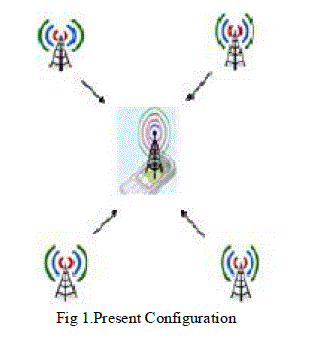 |
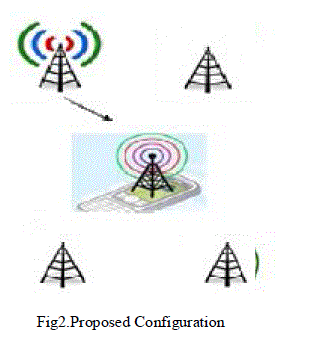 |
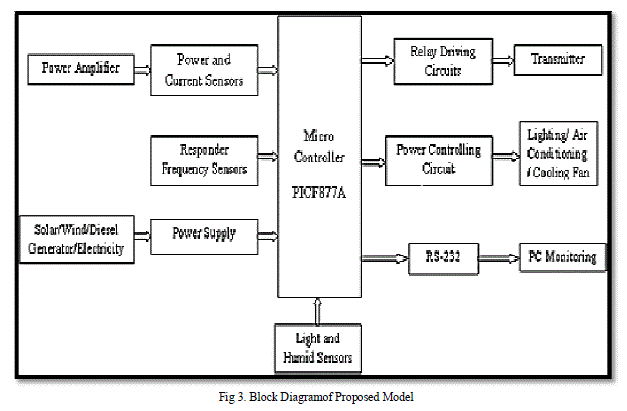 |
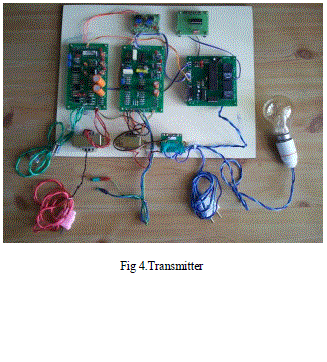 |
| Figure 1 |
Figure 2 |
Figure 3 |
Figure 4 |
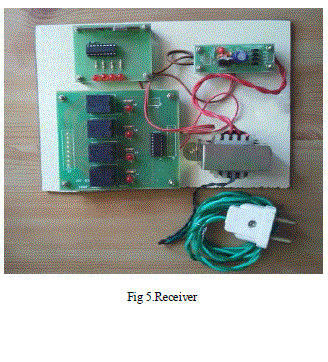 |
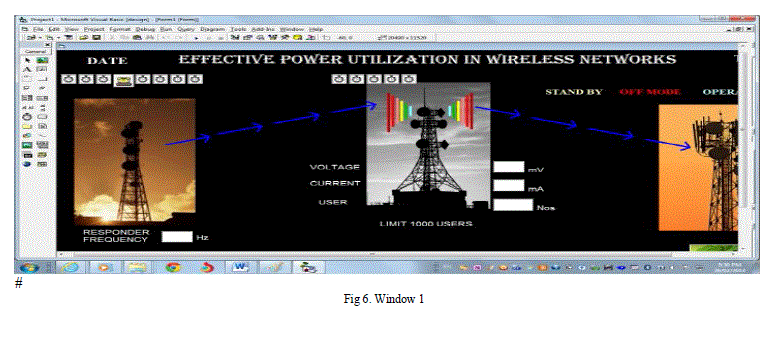 |
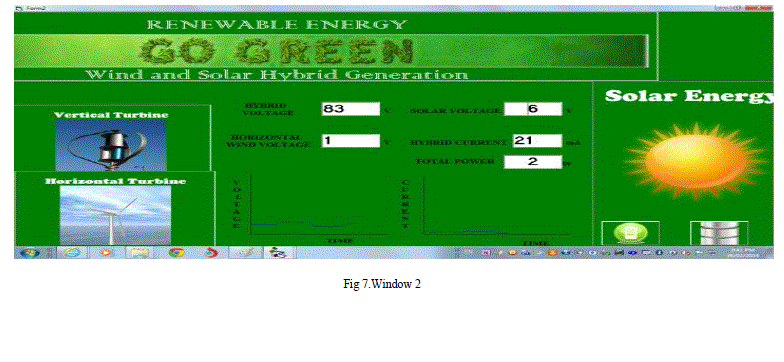 |
 |
| Figure 5 |
Figure 6 |
Figure 7 |
Figure 8 |
|
| |
References
|
- Andreas Gladisch, Honggang Zhang, Mario Pickavet, “Energy Efficiency in Communications,” IEEE Communication Magazine, vol. 48, no. 11, Nov.2010, pp. 48–49.
- Claussen.H, Lester T.W. Hoand, Pivit.F, “Leveraging Advances in Mobile Broadband Technology to ImproveEnvironmentalSustainability,”Telecommunication Journal Australia, vol. 59, no. 1, 2009, pp. 1–18.
- http://www.alcatel-lucent.com
- Auer.G, Blume.O,andCorreia, “Challenges and Enabling Technologies for Energy Aware Mobile Radio Networks,” IEEECommunication Magazine.,vol. 48, no. 11, Nov. 2010, pp. 66–72.
- Comaniciu.C, Mandayam.N.B, and Poor.H.V, “Radio Resource Management for Green Wireless Networks,” Proc. IEEE VTC-Spring, Apr. 2009, pp.1–5.
- Bianzino.A, Chaudet.C,Rossi.D, “A Survey of Green Networking Research,” IEEE Communication. Surveys and Tutorials, vol. PP, no. 99, 2010, pp.1–18.
- Jie Gong, Yiqun Wu, ZhishengNiu, “Cell Zooming for Cost-Efficient Green Cellular Networks,” IEEE CommunicationMagazine, vol. 48, no. 11,Nov. 2010, pp. 74–79.
- Chahed.T, Elayoubi.S.E, and Saker.L, “Minimizing Energy Consumption Via Sleep Mode in Green Base Station,” Proc. IEEE WCNC, Apr. 2010, pp.1–6.
|